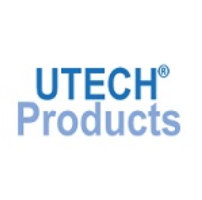EGF Monkey ELISA Kit, Sandwich ELISA Kit, Pack of 1

|
|
Details:
The Monkey Epidermal Growth Factor (Mk EGF) ELISA quantitates Rhesus Mk EGF in monkey serum, plasma, or cell culture medium. The assay will exclusively recognize both natural and recombinant Mk EGF. Principle of the method The Monkey EGF solid-phase sandwich ELISA (enzyme-linked immunosorbent assay) is designed to measure the amount of the target bound between a matched antibody pair. A target-specific antibody has been pre-coated in the wells of the supplied microplate. Samples, standards, or controls are then added into these wells and bind to the immobilized (capture) antibody. The sandwich is formed by the addition of the second (detector) antibody, a substrate solution is added that reacts with the enzyme-antibody-target complex to produce measurable signal. The intensity of this signal is directly proportional to the concentration of target present in the original specimen. Rigorous validation Each manufactured lot of this ELISA kit is quality tested for criteria such as sensitivity, specificity, precision, and lot-to-lot consistency. See manual for more information on validation.EGF belongs to a family of growth factors that bind to the 170 kDa EGF receptor. The EGF receptor ligands are synthesized as type I transmembrane proteins of 130 kDa with an N-terminal extension called the EGF module and a C-terminal fragment, also known as the cytoplasmic tail. EGF comprises nine EGF motives; only the one adjacent to the cell membrane is functional as an EGF receptor-binding domain. Due to proteolytic cleavage a soluble growth factor of 6 kDa containing the EGF module is released into the extracellular space (′ectodomain shedding′). EGF can be detected in most body fluids; the concentration is especially high in plasma, urine, saliva, and milk. Platelets as well as cells in various organs such as in brain, kidney, salivary gland, and stomach release EGF. As a mitogen for endothelial cells EGF also affects angiogenesis and plays a role in wound healing processes. Blocking the release of EGF receptor ligands inhibits growth and migration in several EGF receptor-dependent cell lines and greatly retards wound re-epithelialization due to impaired keratinocyte migration. Overexpression of one or more receptors and/or ligands is a feature of the majority of human carcinomas and epithelial cancers.
Additional Information
| SKU | 10311338 |
|---|---|
| UOM | Pack |
| UNSPSC | 41116126 |
| Manufacturer Part Number | EPEGF |

